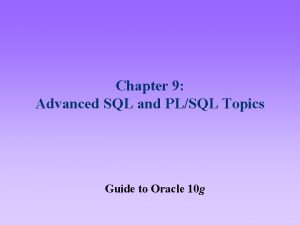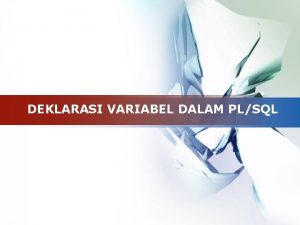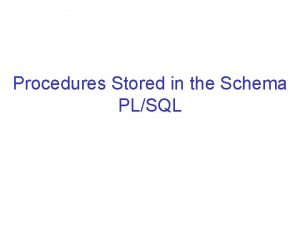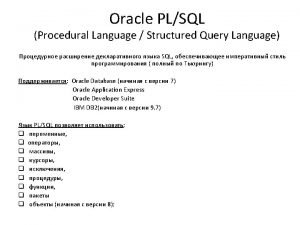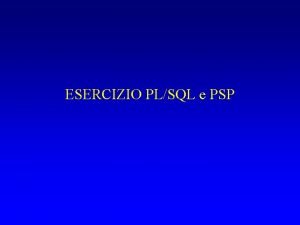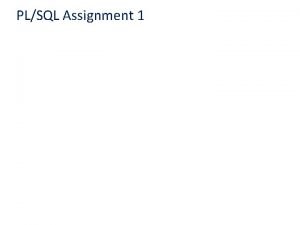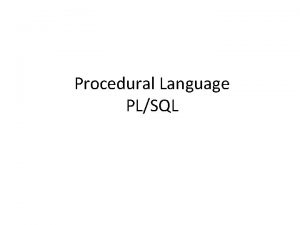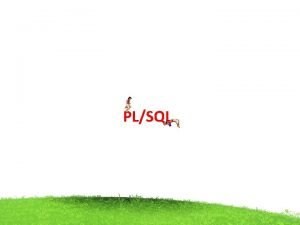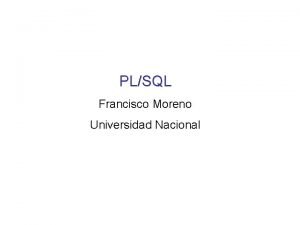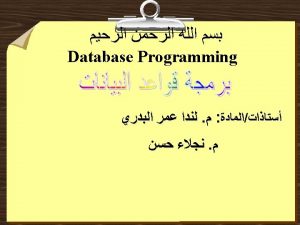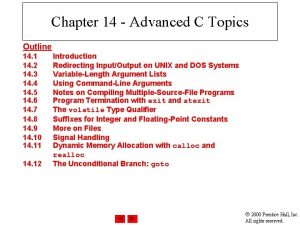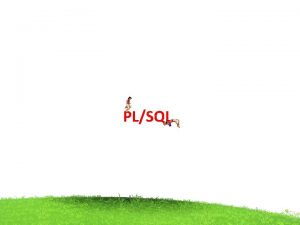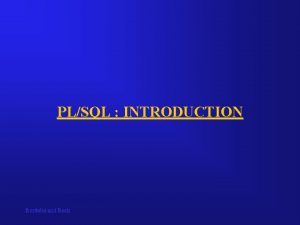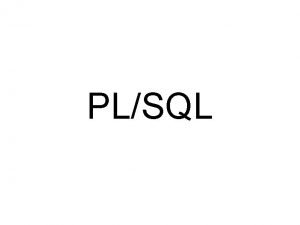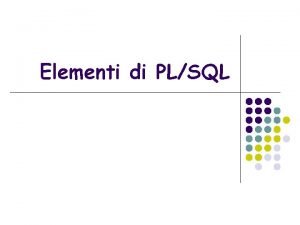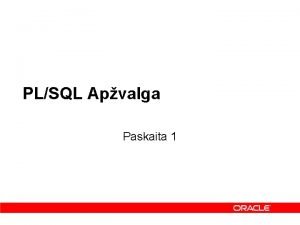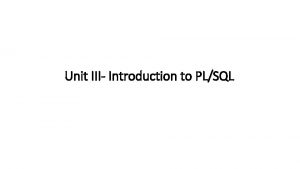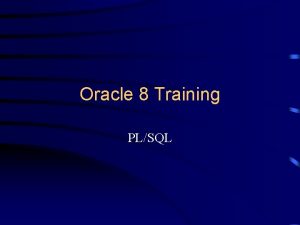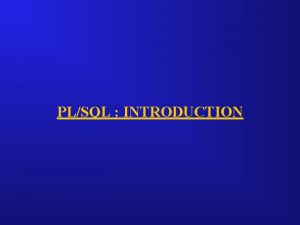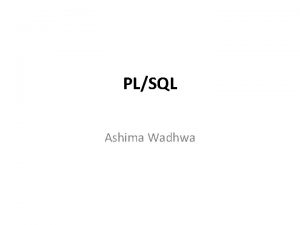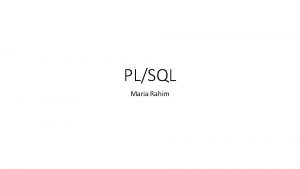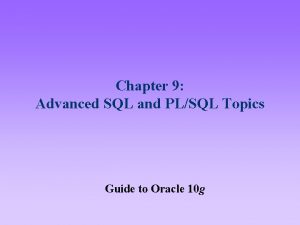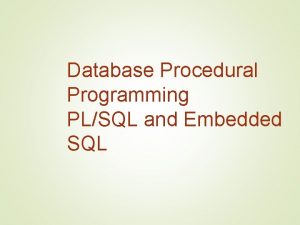Chapter 9 Advanced SQL and PLSQL Topics Guide

















- Slides: 17

Chapter 9: Advanced SQL and PL/SQL Topics Guide to Oracle 10 g

Lesson A Objectives • • Grant permissions to users Work with PL/SQL stored program units Create server-side stored program units in SQL*Plus Use Forms Builder to create stored program units 2

Granting privileges • Syntax: GRANT privilege 1, privilege 2, … ON object_name TO user 1, user 2, …; • Example 1: GRANT SELECT, ALTER ON student TO scott; • Example 2: GRANT ALL ON loc_id_sequence TO PUBLIC; 3

Revoking privileges • Syntax: REVOKE privilege 1, privilege 2, … ON object_name FROM user 1, user 2, …; • Example 1: REVOKE SELECT, ALTER ON student FROM scott; • Example 2: REVOKE ALL ON loc_id_sequence FROM PUBLIC; 4

Overview of PL/SQL Stored Program Units • Program unit – Self-contained group of program statements that can be used within larger program • Anonymous PL/SQL programs – Programs that do not interact with other program units • Stored PL/SQL program units – Programs that other programs can reference – Programs that other DB users can execute • Server-side program units – Stored as DB objects and execute on the DB server • Client-side program units – Stored in the workstation’s file system & execute on the client 5

Types of Oracle 10 g Stored Program Units 6

Creating Stored Program Units • Procedures – Receive multiple input parameters – Return multiple output values or return no output values – Perform action such as inserting, updating, or deleting database records • Functions – Receive multiple input parameters – Always returns single output value 7

Syntax to Create a Stored Program Unit Procedure • Parameter mode – IN specifies a parameter passed as a read-only value that the receiving program cannot change – OUT specifies a parameter passed as a write-only value that can appear only on the left side of an assignment statement in the program unit – IN OUT specifies a parameter that is passed and whose value can be changed within the 8 receiving program unit.

Creating a Stored Procedure in SQL*Plus 9

Calling a Stored Procedure • Execute directly from SQL*Plus command line • Create separate PL/SQL program that contains – Command to call stored procedure – Passes parameter values to procedure • Calling stored procedure from SQL*Plus command line: EXECUTE procedure_name (parameter 1_value, parameter 2_value, . . . ); 10

Calling a Stored Procedure (continued) • Variables passed for each parameter – Must be in same order as parameters appear in parameter declarations list • Calling stored procedure from separate PL/SQL program – Similar to calling stored procedure from SQL*Plus command line – Omit EXECUTE command update_enrollment_grade(MA 100, 12, B); 11

Creating a Stored Program Unit Function • Use CREATE OR REPLACE FUNCTION 12

Creating a Stored Program Unit Function 13

Calling a Function • Syntax: variable_name : = function_name(parameter 1, parameter 2, . . . ); • Variables passed for parameter values – Must be in same order as parameters appear in function declaration 14

Using Forms Builder to Create Stored Procedures and Functions • Create and test program unit within form • Save as stored program unit in database schema • Advantage of using Forms Builder – Provides enhanced development and debugging environment – PL/SQL Editor 15

Creating, Testing, and Saving a Stored Program Unit Procedure in Forms Builder • • Create stored procedure in test form Create form trigger to test program unit procedure Save program unit as stored procedure in database Database Objects node – Contains child nodes that represent every database user 16

Creating, Testing, and Saving a Stored Program Unit Function in Forms Builder (continued) • Create program unit function in Forms Builder • Test program unit function • Save program unit form as stored program unit in database Show to use Ch 9 ATest_PROCEDURE. fmb and Ch 9 ATest_FUNCTION. fmb 17
 Plsql topics
Plsql topics Difference between oracle and pl sql
Difference between oracle and pl sql Cs 527
Cs 527 Deklarasi variabel
Deklarasi variabel Stored procedure plsql
Stored procedure plsql Record type in plsql
Record type in plsql Create table in procedure oracle
Create table in procedure oracle Plsql replace
Plsql replace Plsql is
Plsql is Plsql cursors
Plsql cursors Cursores plsql
Cursores plsql Plsql programming
Plsql programming Angular guard naming convention
Angular guard naming convention Angular advanced topics
Angular advanced topics Advanced c topics
Advanced c topics Advanced topics in web development
Advanced topics in web development Android advanced topics
Android advanced topics Advanced topics in computer science
Advanced topics in computer science
